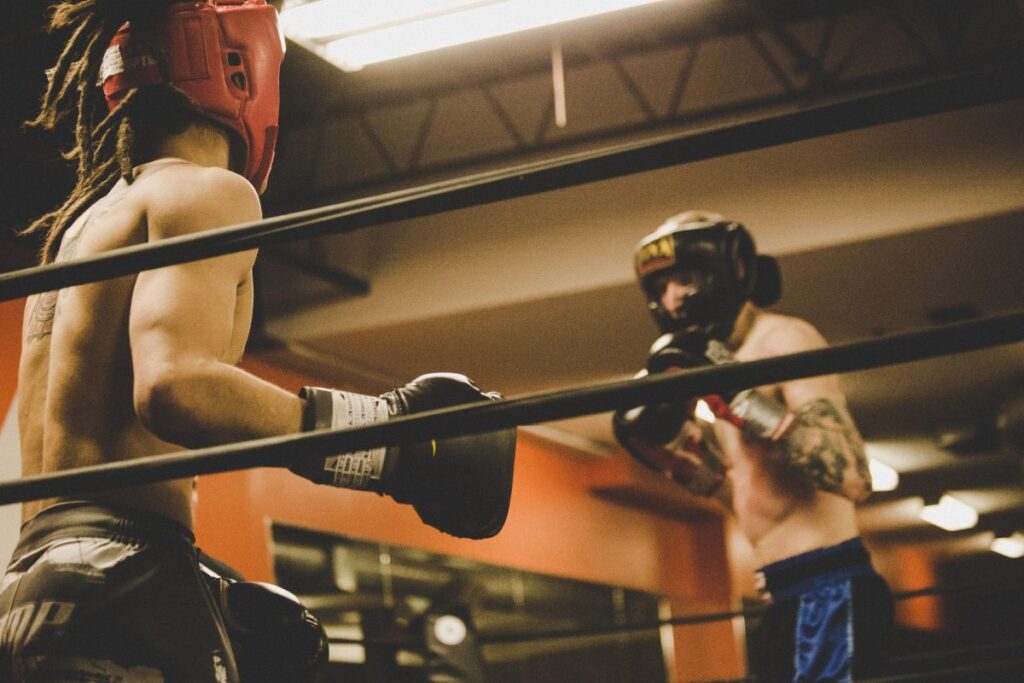
Beach volleyball is a dynamic and engaging sport played in the natural environment of a sandy beach.
However, before you start playing, it is important to understand the basic rules and settings, including court size.
This article focuses on the official dimensions of a beach volleyball court and provides useful information for beginners who want to start playing beach volleyball, as well as people who are thinking of setting up their own court.
We’ll also touch on how the size of the court affects the game, and how you can easily create a beach volleyball court at home or at the park.
Get the most out of beach volleyball and take the first step toward a deeper understanding of the game with this guide.
目次
Basic dimensions of beach volleyball court
Beach volleyball is a sport that is loved all over the world, and the size of the playing field greatly influences the nature of the game.
Here we will introduce the official court dimensions and standards for beach volleyball, an international sport.
Court size for official matches
The official dimensions of a beach volleyball court are 16 meters long and 8 meters wide.
This is the dimension established by the International Volleyball Federation (FIVB) and is used in international competitions including the Olympics.
The height of the net is set at 2.43 meters for men and 2.24 meters for women, and is stretched across the center of the court.
coat line
The boundaries of the beach volleyball court will be clearly marked with a 5cm wide line.
These lines are outside the court, so the lines themselves are not considered part of the court.
Therefore, if the ball touches the line, it is considered out. A clear distinction between end lines and side lines is important, and players must play with these lines in mind.
service zone
The service area, or service zone, is located behind the end lines and spans the entire width of the court.
The serving player must serve from within this area.
The game begins by serving from the service zone.
free zone
A space called a free zone is set up around the beach volleyball court.
This provides space for players to move around to play the ball and is recommended to be at least 3 meters wide.
The larger the free zone, the more moves players can make and the higher the level of the match.
The size of the beach volleyball court and its dimensions form the basic framework of the game.
By understanding these standards and playing on an appropriately sized court, you will be able to experience the true fun of beach volleyball.
It is recommended that courts be installed according to these standards not only for official matches, but also for recreation and training.

2. Effect of court dimensions on play
The dimensions of a beach volleyball court have a huge impact on a player’s tactics and playing style.
If the court is set to the official size of 16 meters x 8 meters, players will need to develop their techniques and strategies to suit this specific size.
Let’s take a closer look at how court size affects beach volleyball.
Impact on play style
The size of the court has a direct impact on player movement, positioning, and even playing style.
On a smaller court, players have to react faster, limiting their offensive and defensive options.
On the other hand, an official-sized court allows players to move around more widely, allowing for a greater variety of attacks and defenses.
variety of tactics
The wider the court, the more varied your tactical options are.
Players can use various types of shots and feints to outwit their opponents.
On wide courts, tactics to move the opposing team and create gaps are especially important.
Also, when serving, placement that takes advantage of the width of the court is strategically effective.
physical and stamina
Playing on an official-sized court also has a huge impact on a player’s physicality and stamina.
A high level of athleticism and stamina is required as you have to cover a large area.
By learning how to move efficiently and manage their physical strength, players will be able to perform at their best throughout the match.
importance of communication
In beach volleyball, which is played in pairs, communication with your partner is very important.
The larger the court, the more important effective communication, including shouting and use of signs, becomes.
Good communication helps teams stay aligned and execute tactics accurately.
Court dimensions are a decisive factor in beach volleyball tactics and playing style.
Players must adjust their tactics to the court size to maximize the efficiency of their play.
By practicing and playing on an official-sized court, players will be able to hone their skills and experience the deep appeal of beach volleyball.

3. Points to remember when building a beach volleyball court at home or in a park
One way to enjoy beach volleyball more easily is to set up a court in a familiar place, such as your garden or park.
When making a homemade beach volleyball court, you need to take into account several important points.
Here we will give you some advice on building a beach volleyball court at home or in the park, as well as points to keep in mind when adjusting the court size.
Choosing the right location
- Flat ground : It is important that the area where you set up your court is as flat as possible. Uneven ground increases the risk of injury during play.
- Plenty of space : Choose a location with an official size court, plus at least a 3 meter free zone around you.
Coat size adjustment
- Adjust to fit your space : If the official size (16m x 8m) is not available, you can also adjust the size of the court to fit your space. However, to maintain the quality of play, try to maintain the ratio as much as possible.
- Sizing for kids : If you have kids playing, you can make the court smaller to create a more playable and enjoyable environment for them.
Necessary equipment
- Net Installation : Beach volleyball nets will be installed at a height of 2.43m for men and 2.24m for women. Use homemade or store-bought poles to ensure they are securely anchored.
- Establishing lines : Boundaries can be marked directly in the sand or grass, or clearly defined using rope or tape. It is important to measure the dimensions accurately and securely fasten them.
Preparing the sand (for sandy soil)
- Sand quality : Choose fine, soft sand and make sure it doesn’t contain hazardous materials such as stones or glass shards.
- Sand Thickness : Ideally, the sand should be spread evenly over the entire court to a thickness of 15cm to 20cm. This thickness is said to be less likely to cause injury to players and supports movement and jumps in the sand.
-
Install lighting (if necessary): If you are likely to play at night, consider installing adequate lighting. Plan your lighting to ensure that the entire play area is evenly lit and does not cause eye discomfort for players or spectators.
-
Maintenance: Regular maintenance is required to keep the coat in good condition. Sand can harden over time and must be plowed and aerated regularly to keep it soft. Also, check the condition of boundaries and nets, and make corrections or replacements as necessary.
-
Ensuring Safety: Always keep safety first when setting up and playing on the court. Make sure that the equipment you install meets safety standards and that there are no obstacles around the play area that could cause injury to players.
-
Local regulations and permits: It is also important to check local regulations and permits when installing a beach volleyball court in a park or common property . Local regulations and permits may be required for the installation and use of facilities in certain locations. In public places, you will need to obtain permission from the local government or governing body, so be sure to check the relevant regulations and procedures in advance. Also, even if you’re working on private property, such as your own garden, you’ll need to comply with local building codes and ordinances, so don’t forget to obtain the appropriate permits. Meeting safety and legal requirements is an important step to enjoying beach volleyball.

4. How to practice to make the most of the beach volleyball court
A beach volleyball court is the perfect space for players to hone their speed, technique, and tactics.
Below, we will explain techniques and tactics for effective practice using official court sizes.
Serve/receive practice
- Practice Positioning : Use plenty of space from one end of the court to the other to practice positioning and movement for receiving serves.
- Practice diving and sliding : Practice diving and sliding to react quickly and receive the ball when receiving a simulated serve.
defense practice
- Full Court Coverage : Run in different directions while working with a partner to improve your ability to cover the entire court.
- Blocking Practice : Practice blocking near the net to improve your technique of blocking your opponent’s spikes.
attack practice
- Changing angles and heights : Practice attacking while changing the angle and height of the ball to hone your techniques for evading your opponent’s blocks.
- Side-out practice : Refine your attacking techniques to score points with one shot.
communication practice
- Establishing signs and signals : Establish signs and signals to facilitate communication with teammates.
- Situational Judgment Practice : Improve your ability to assess the movement of the ball and the opposing team, and make plays appropriate to the situation.
Beach volleyball courts are spacious and are a great place to practice a variety of exercises.
Players can take advantage of official court sizes to improve their physical ability and technique.

5.Summary
How to practice to make the most of the beach volleyball court is a valuable opportunity to hone various skills and tactics.
Practicing on official court sizes helps players improve their abilities and refine team tactics.
During practice, it is important to thoroughly hone basic skills such as serve/receive, defense, and attack.
Additionally, by running around the entire court and coordinating with teammates, players can improve their situational judgment and communication skills during games.
Furthermore, students will develop the ability to respond to various situations and plays by taking advantage of the court size.
This allows players to react flexibly and create advantageous developments during the match.
Practicing on a beach volleyball court not only improves technique and tactics, but also improves teamwork and communication skills.
Through continuous practice, players can realize their own growth and aim for a higher level of play.




